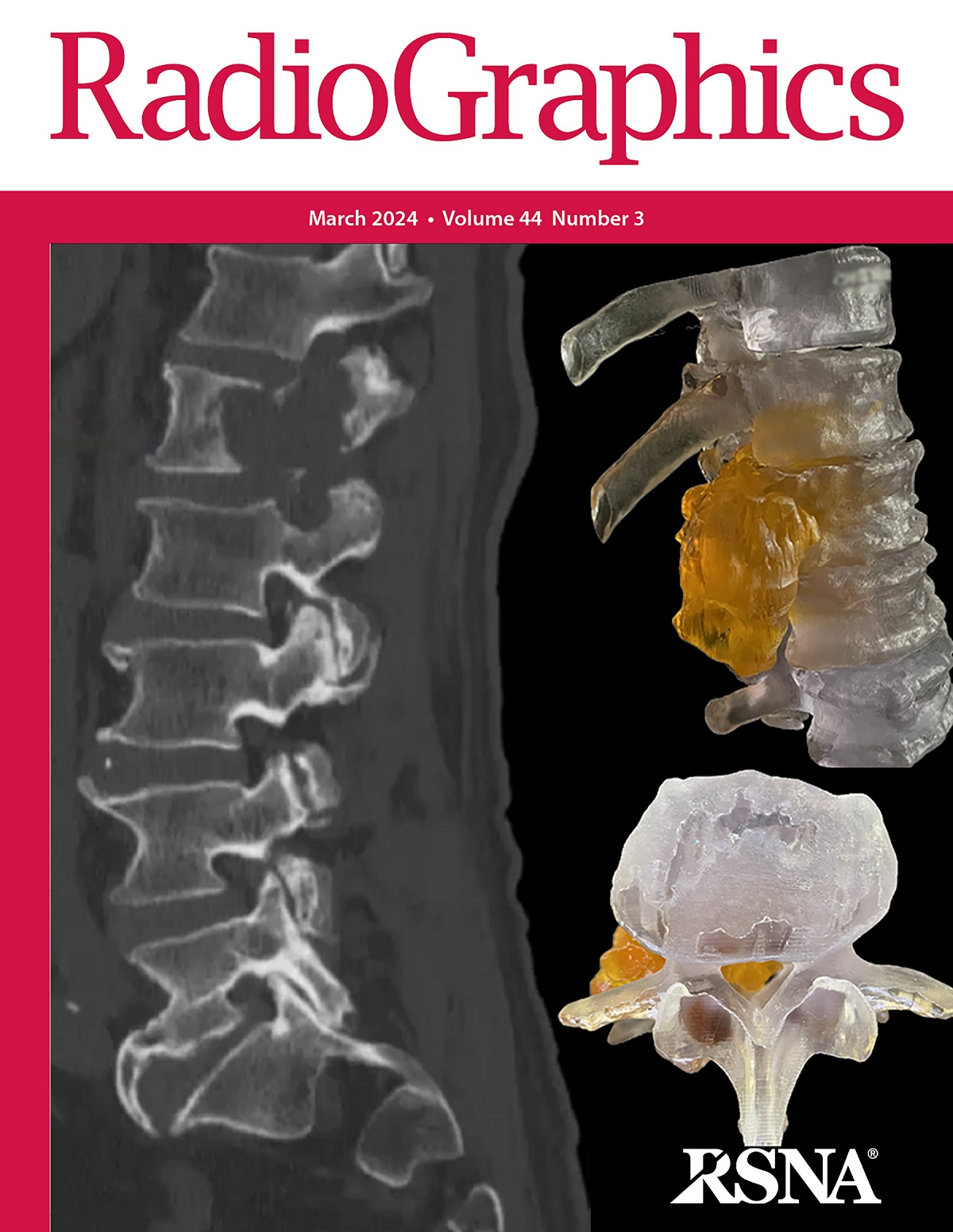求助PDF
{"title":"异位和异位脾脏病谱。","authors":"Leslie W Nelson, Scott M Bugenhagen, Meghan G Lubner, Sanjeev Bhalla, Perry J Pickhardt","doi":"10.1148/rg.240004","DOIUrl":null,"url":null,"abstract":"<p><p>A spectrum of heterotopic and ectopic splenic conditions may be encountered in clinical practice as incidental asymptomatic detection or symptomatic diagnosis. The radiologist needs to be aware of these conditions and their imaging characteristics to provide a prompt correct diagnosis and avoid misdiagnosis as neoplasm or lymphadenopathy. Having a strong knowledge base of the embryologic development of the spleen improves understanding of the pathophysiologic basis of these conditions. Spleen-specific imaging techniques-such as technetium 99m (<sup>99m</sup>Tc)-labeled denatured erythrocyte scintigraphy, <sup>99m</sup>Tc-sulfur colloid liver-spleen scintigraphy, and MRI with ferumoxytol intravenous contrast material-can also be used to confirm the presence or absence of splenic tissue. Heterotopic splenic conditions include splenules and splenogonadal fusion (discontinuous or continuous forms). These heterotopic conditions are caused by incomplete fusion of the splenic primordia (splenule) and abnormal fusion of the gonadal and splenic tissue (splenogonadal fusion). Ectopic splenic conditions arise in patients with a prior splenic injury (splenosis), laxity or maldevelopment of the splenic ligaments (wandering spleen), or heterotaxy syndromes (polysplenia and asplenia). Importantly, these heterotopic and ectopic splenic conditions can also manifest with complications, including vascular torsion and rupture. <sup>©</sup>RSNA, 2024.</p>","PeriodicalId":54512,"journal":{"name":"Radiographics","volume":null,"pages":null},"PeriodicalIF":5.2000,"publicationDate":"2024-11-01","publicationTypes":"Journal Article","fieldsOfStudy":null,"isOpenAccess":false,"openAccessPdf":"","citationCount":"0","resultStr":"{\"title\":\"Spectrum of Heterotopic and Ectopic Splenic Conditions.\",\"authors\":\"Leslie W Nelson, Scott M Bugenhagen, Meghan G Lubner, Sanjeev Bhalla, Perry J Pickhardt\",\"doi\":\"10.1148/rg.240004\",\"DOIUrl\":null,\"url\":null,\"abstract\":\"<p><p>A spectrum of heterotopic and ectopic splenic conditions may be encountered in clinical practice as incidental asymptomatic detection or symptomatic diagnosis. The radiologist needs to be aware of these conditions and their imaging characteristics to provide a prompt correct diagnosis and avoid misdiagnosis as neoplasm or lymphadenopathy. Having a strong knowledge base of the embryologic development of the spleen improves understanding of the pathophysiologic basis of these conditions. Spleen-specific imaging techniques-such as technetium 99m (<sup>99m</sup>Tc)-labeled denatured erythrocyte scintigraphy, <sup>99m</sup>Tc-sulfur colloid liver-spleen scintigraphy, and MRI with ferumoxytol intravenous contrast material-can also be used to confirm the presence or absence of splenic tissue. Heterotopic splenic conditions include splenules and splenogonadal fusion (discontinuous or continuous forms). These heterotopic conditions are caused by incomplete fusion of the splenic primordia (splenule) and abnormal fusion of the gonadal and splenic tissue (splenogonadal fusion). Ectopic splenic conditions arise in patients with a prior splenic injury (splenosis), laxity or maldevelopment of the splenic ligaments (wandering spleen), or heterotaxy syndromes (polysplenia and asplenia). Importantly, these heterotopic and ectopic splenic conditions can also manifest with complications, including vascular torsion and rupture. <sup>©</sup>RSNA, 2024.</p>\",\"PeriodicalId\":54512,\"journal\":{\"name\":\"Radiographics\",\"volume\":null,\"pages\":null},\"PeriodicalIF\":5.2000,\"publicationDate\":\"2024-11-01\",\"publicationTypes\":\"Journal Article\",\"fieldsOfStudy\":null,\"isOpenAccess\":false,\"openAccessPdf\":\"\",\"citationCount\":\"0\",\"resultStr\":null,\"platform\":\"Semanticscholar\",\"paperid\":null,\"PeriodicalName\":\"Radiographics\",\"FirstCategoryId\":\"3\",\"ListUrlMain\":\"https://doi.org/10.1148/rg.240004\",\"RegionNum\":1,\"RegionCategory\":\"医学\",\"ArticlePicture\":[],\"TitleCN\":null,\"AbstractTextCN\":null,\"PMCID\":null,\"EPubDate\":\"\",\"PubModel\":\"\",\"JCR\":\"Q1\",\"JCRName\":\"RADIOLOGY, NUCLEAR MEDICINE & MEDICAL IMAGING\",\"Score\":null,\"Total\":0}","platform":"Semanticscholar","paperid":null,"PeriodicalName":"Radiographics","FirstCategoryId":"3","ListUrlMain":"https://doi.org/10.1148/rg.240004","RegionNum":1,"RegionCategory":"医学","ArticlePicture":[],"TitleCN":null,"AbstractTextCN":null,"PMCID":null,"EPubDate":"","PubModel":"","JCR":"Q1","JCRName":"RADIOLOGY, NUCLEAR MEDICINE & MEDICAL IMAGING","Score":null,"Total":0}
引用次数: 0
引用
批量引用


